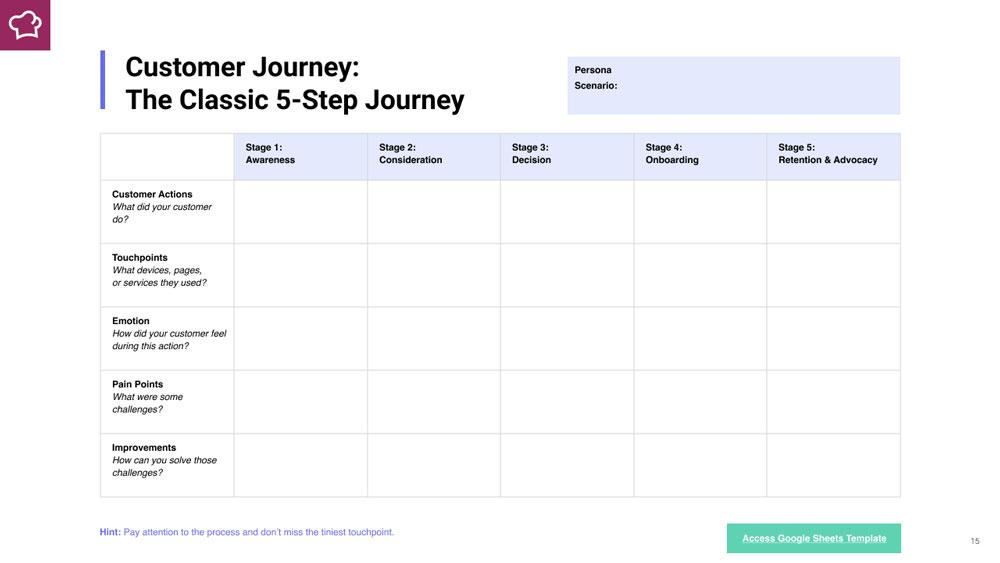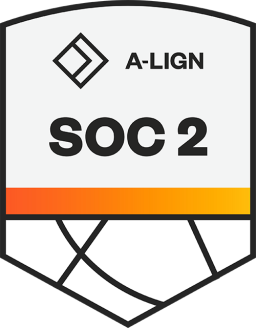Fantastic customer experience (CX) isn’t born out of one single interaction. It comes from delivering seamless experiences at every single step of the customer journey. In a world where customers have more options and information at their fingertips, companies are recognizing the importance of going above and beyond customers’ growing expectations. As a result, mapping the customer journey is now a critical exercise for customer-centric brands to help them stand out.
Customer journey mapping helps companies better visualize how people navigate the customer journey and understand how they perceive their experiences at critical moments along the way. Most importantly, find opportunities to improve CX at these moments of truth to ensure a seamless journey overall.
Gathering as many first-party insights and bringing together key stakeholders from across your organization is essential to gain a complete understanding of a customer’s journey.
In this post, we look at the types of insights you need to help drive your customer journey mapping efforts. We also look at where to get these insights, and what to do with your maps once they’re created.
What is customer journey mapping?
Why is mapping the customer journey important?
6 insights you need for mapping out the customer journey
6 data sources that will help power your customer journey mapping
What to do once you’re finished mapping the customer journey
What is customer journey mapping?
Customer journey mapping, or user journey mapping, illustrates how a customer engages with a company when completing a specific goal. Mapping the customer journey helps companies step into the shoes of their customers, and help you visualize customers’ goals, intent, expectations, perceptions, and emotions at every step of their journey.
Why is mapping the customer journey important?
Successful customer journey maps require time, effort, and resources to put together. Not to mention, they require stakeholders from across the organization to volunteer their time to contribute.
As a result, you may need to first sell the idea to management about why customer journey mapping is a worthwhile exercise.
In doing so, focus on the intended end result of your maps. The insights you can extract from these maps can help identify opportunities to boost the customer experience for key customer segments, increase revenue and cut customer service costs. Plus, with the majority of brands now competing primarily on the basis CX, not doing this exercise can be costly on its own.
Sample findings to build your case for mapping the customer journey
63% of customers say the best brands exceed expectations across the customer journey. (Source: Wunderman, via Adobe)
85% of professionals who have used customer journey maps found that they result in increased customer satisfaction, lower churn, fewer complaints, and higher NPS. (Source: MyCustomer)
32% of people stop doing business with a business they love after one bad experience. (Source: PwC)
6 insights you need for mapping out the customer journey
How do you create a customer journey map? First things first, you need to have the pieces in place to ensure you and others participating in this exercise are selected and briefed:
Recruit a core group of stakeholders from across your organization (from your own department, IT, front-line employees, subject matter experts, etc.)
Communicate the vision of your journey mapping project to these stakeholders, including a workshop where hypotheses will be discussed, tested, refined, and examined for areas of improvement.
Develop a plan for the scope and scale of the journeys to be mapped.
Update the customer personas that will be associated with these journeys.
For a journey mapping workshop to be successful, you need to come out of the session with a more concrete understanding of what your customers need and expect from their experiences at every stage. Also, you should be able to better empathize with their experiences at each touchpoint along the way.
The ultimate goal is to visualize better where roadblocks stand in the way of great experiences and to identify opportunities to eliminate them. With these insights in hand, your team can help recommend ways to design experiences that meet or surpass customers’ growing expectations.
Gut-feeling and intuition can go a long way during these exercises. However:
To generate maps that truly represent your customers’ journeys, incorporate first-party insights about your customers themselves, and their experiences with your brand. After all, they are the ones navigating these journeys first-hand.
So, what types of insights should you look to obtain for these maps. Here are six you can’t do without:
1. Goals
Every map should focus on a specific goal that your customers are looking to accomplish.
Is it to book a vacation at a resort? To buy a new car? How about switching to your company from a competitor? Every journey starts with an overarching goal that drives what a customer does, thinks, and feels every step of the way. Specifying this goal before getting started is essential to keep your efforts focused.
2. Intent
What is the customer looking to accomplish at each step of the customer journey?
Specific motivations drive every interaction. Confirming these motivations is essential to contextualize why customers perceive their experiences with your brand the way they do.
3. Persona insights
Who is most likely to go through this journey?
Assigning personas to maps helps everyone put a face to the customers most likely to go through these journeys. Include demographic (e.g., age, gender, income) and psychographic insights (e.g., activities, personality, attitudes) to help everyone better visualize this customer.
4. Expectations
Maps should point out customers’ intent at each stage of the journey and confirm what they expect from these interactions.
For example, are they expecting self-serve tools to help move to the next stage of their journey, or do they prefer to reach out to an agent (e.g., live chat, by phone) to help them accomplish certain tasks? Knowing your customers’ expectations at each touchpoint in the first place is the only way to see how you can meet or exceed those expectations.
5. Perceptions
Is your brand actually meeting customers’ expectations at each touchpoint? What do they like or dislike about their experiences? Are there any roadblocks currently jeopardizing their experiences at specific touchpoints?
The ultimate goal of mapping the customer journey is to lift these perceptions at each stage. As such, knowing how customers currently perceive their experiences today gives you a benchmark to gauge the impact of your future CX efforts (more on that in the next section).
6. Emotions
What state of mind are customers typically in when they reach this stage of their journey? Are they happy? Angry? Confused?
Visualizing how a customer’s emotions may fluctuate throughout a journey can help identify where customers may require additional support options to address their frustrations and find opportunities to elevate positive experiences even further.
6 data sources that will help power your customer journey mapping
Every department – client-facing or not – contributes in some way to the customer experience that an organization eventually delivers. As such, customer journey maps should draw from various sources and stakeholders across departments to get as complete a picture of the customer as possible.
That can also help ensure employees’ point-of-view is accounted for regarding how experiences are currently delivered. They are the ones providing the CX, after all.
Here are just some of the data sources where you can help unearth these insights.
1. Interviews with client-facing employees
They interact directly with your customers day in and day out. They are addressing their different needs and roadblocks in the customer journey first-hand. Also, these key members can help shine a light on any current processes and technologies to consider to best support their efforts.
2. Case management CRM stats
Are you leveraging a case management Customer Relationship Management (CRM) tool to manage incoming messages and requests from customers? This tool can provide a wealth of insights you can use to inform your maps. For example, you can identify the most common types of requests or complaints that come in from certain customer segments (e.g., loyalty status) and can help highlight common snags these customers encounter along their journey.
3. Social media insights
Customers are turning to social media to voice their opinions about a brand, especially after a negative experience. But what incidents are more likely to push people to social media to share their displeasure publicly in the first place?
Look to your social media management tool for insights to help shed light on common roadblocks, and determine if employees feel they have the means (or not) to best help customers surpass these roadblocks.
4. Industry reports
Are your customers’ experiences in line with what similar brands in your industry or sector are also seeing? When possible, compare your first-party insights with third-party industry reports to determine how your findings align with what other brands see, and where you may be falling short.
5. Customer interviews
Many brands incorporate their customers as part of the journey mapping process. This qualitative approach can provide in-depth insights into the mindset of customers at crucial moments of their journey. It’s important to remember that one customer’s experience may not necessarily be representative of your overall customers’ experiences with your brand. Nevertheless, this approach can offer an essential perspective during your mapping exercise.
6. Customer surveys
No one knows customers’ needs, expectations, preferences, and perceptions than customers themselves.
CX-driven brands engage customers for feedback at critical moments in their journey to keep a finger on the pulse of their efforts. For example, many engage customers on their website or mobile app or send follow-up surveys to their customers via email or SMS. Leveraging first-party insights from your voice of the customer solution before, during, and after your journey mapping exercises helps you determine how customers view their experiences and how impactful your efforts to improve CX are.
Customer journey maps should draw from various sources and stakeholders across departments to get as complete a picture of the customer as possible.
Once you’ve conducted your journey mapping workshop and gathered all your insights, it’s time to put together your map. Every company might tackle customer journey mapping differently (a quick Google search will unearth plenty of examples). However, it’s important to leverage an approach that best meets your current needs and resources.
There are many excellent templates out there to choose from to help get you started. Socialbakers (now a part of Emplifi) provides a great customer journey mapping template (including the example below) you can check out.

What to do once you are finished mapping the customer journey
A customer journey map is only as valuable as what you do with it. You’ve spent so much time and effort building out the perfect map, your next goal is to get it in front of the right stakeholders to start driving changes to your organization’s CX strategy.
Consider doing the following:
Compare your map to your organization’s current customer service processes. Determine how well these processes currently support the existing pathways and touchpoints. Also, determine where they may be areas of improvement to support potential updates that come as a result of your mapping exercise.
Validate the map you’ve generated with customers. Ensure that it provides an accurate representation of what their journey looks like, and make any necessary adjustments.
Share and present with management and other key stakeholders. Bring your Chief Customer Officer or Chief Experience Officer (and other department heads) up to date and highlight critical issues and opportunities identified during this process.
Make your journey map visible and easily accessible to your team. Displaying your customer journey map can help keep the customer journey top-of-mind and help develop empathy for customers for any projects moving forward.
Put a governance structure in place. Regularly review new data and insights to ensure your journey maps remain up to date. Also, this will help ensure everyone is acting on the latest insights.
How Emplifi can help
Emplifi empowers brands to understand and elevate the customer journey with a unified CX platform that includes powerful customer engagement solutions.
From our award-winning CRM and AI-driven chatbot platform to our proven social media management and voice of the customer solutions, Emplifi helps brands like yours understand and drive positive CX improvements across the customer journey with the power of first-party insights.
See how Emplifi can help you enhance the customer journey. Schedule your personalized demo today.
Editor's Note: This article was originally published on astutesolutions.com. Any statistics or statements included in this article were current at the time of original publication.
























